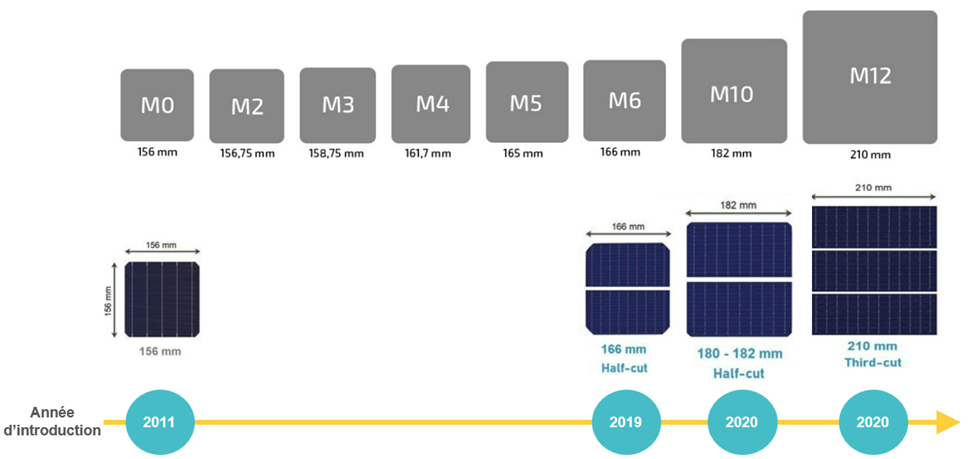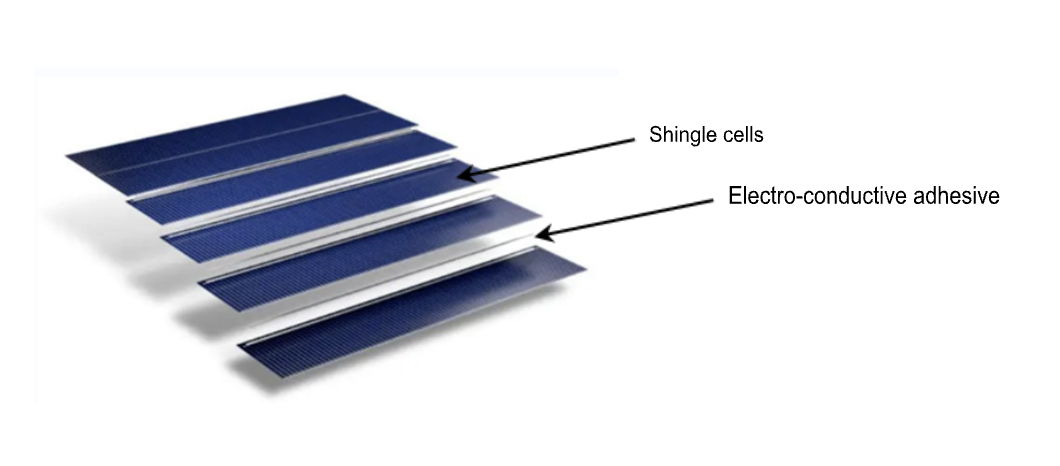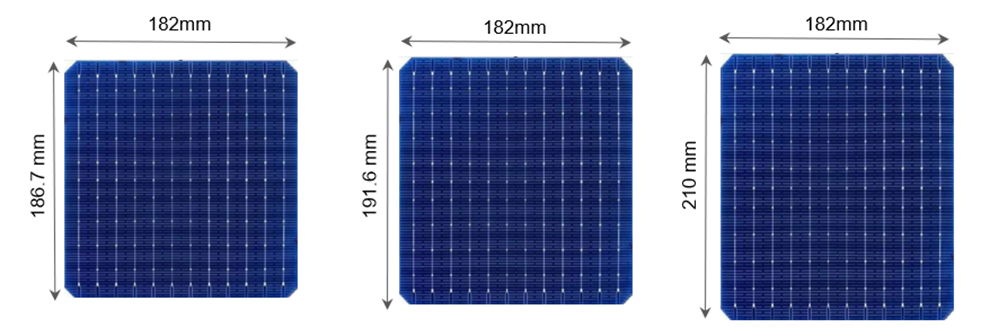What are the different formats of photovoltaic cells?
Monocrystalline photovoltaic cells are made from thin wafers cut from silicon ingots. These ingots being cylindrical in shape, it is necessary to change them to square shape so that the plates obtained after cutting are of pseudo-square section (with rounded corners) or square.
The gradual increase in dimensions
First of all, it is important to understand that the surface area of monocrystalline cells has increased over the years, going from their historical size of 125 mm to 156 mm in 2010, reaching 182 mm and 210 mm from 2020, each new generation having a very specific name and dimensions, as described in the image below:
The cells are named “Mxx”. “M” means that the cells are pseudo-square, while the value “xx” is an index of cell size. The greater the value of this index, the greater the surface area of the cell. There are also “Gxx” type cells where the “G” means that the cell is of square section (without rounded edge), this type of cell is mainly applied to HJT (heterojunction) technology for which the G12 format is the current standard.
The cells used to manufacture actual photovoltaic modules are then cut into different formats called half-cut, shingle and rectangular. The properties of each of these formats are described in the following sections.
The domination of half-cut cells
Traditionally, photovoltaic cells welded in strings were of square sections. The intensity of a cell being proportional to its surface area, it became necessary to reduce this surface area without affecting the dimensions of the silicon ingot from which the wafers are manufactured. Thanks to progress of laser cutting and automation of the stringing process, half-cut type cells appeared in 2019 with two objectives:
Gain a few Watts: the losses by Joule effect being equal to the product of the series resistance by the square of the intensity, cutting the cells in two significantly reduces these losses by Joule effect compared to pseudo-square cells, with the consequence of a gain of 'around 4 to 5 Wp for 400-500 Wp modules compared to square cells.
Limit heat losses due to the effects of hotspots: Half-cut cells dissipate less energy than full cells in the event of shading, this attenuates the hotspot effect and reduces the risk of cell degradation due to excessive temperatures.
Since 2019, this technology has continued to progress to become essential for the majority of PV module manufacturers.
Shingle technology
By pushing the logic applied above further, it is possible to cut the cells into larger quantities of pieces, in order to further reduce the Joule effect losses and the risk of degradation due to the hotspot. It is with this in mind that the design type shingle appeared, where each cell is cut into 5 or even 7 equal parts. For Shingle modules, the cells are not juxtaposed and connected together via conductive wires, but overlap like tiles and are linked by electro-conductive adhesive (ECA or electro-conductive adhesive in English) as described in the image below:
Furthermore, the fact that the cells overlap increases the active surface area of Shingle modules and therefore their efficiency compared to half-cut type modules. Better resistance to mechanical load is also a property linked to the Shingle configuration.
> More details on the subject are available in the dedicated article: What are the advantages of Dualsun FLASH & SPRING Shingle panels?
The emergence of rectangular cells
More recently, during the year 2023, so-called cells appeared rectangular. Two main reasons motivated this technological choice:
A desire to optimize the dimensions of pallets in order to maximize the power of Wc transportable by container
A larger cell surface allows reduction in wafer-to-cell conversion cost per Wc
After a consultation phase, most manufacturers of PERC and TOPCon type cells agreed to set the width of the cells at 182 mm and therefore the width of a module at 1134 mm so as to:
Standardize transport solutions: 1134 mm being the optimal module width for placing 2 pallets vertically in a 40 foot container
Simplify compatibility with existing installation systems, both for the residential sector, the tertiary sector and for ground-mounted power plants.
There are currently (early 2024) three main rectangular cell formats, described below:
The process of manufacturing modules with rectangular cells remains basically the same as for square cells. This therefore includes the laser cutting phase into two equal parts (half-cut, mentioned in a previous paragraph) before the stringing phase during assembly into modules.
Despite a desire to standardize cell dimensions, the appearance of rectangular cells has introduced more complexity into the choice of PV modules, requiring constant monitoring in order to select the optimal design for each application and to plan the evolution of the range FLASH from Dualsun.
To go further: What is the quality control process for Dualsun FLASH panels?



